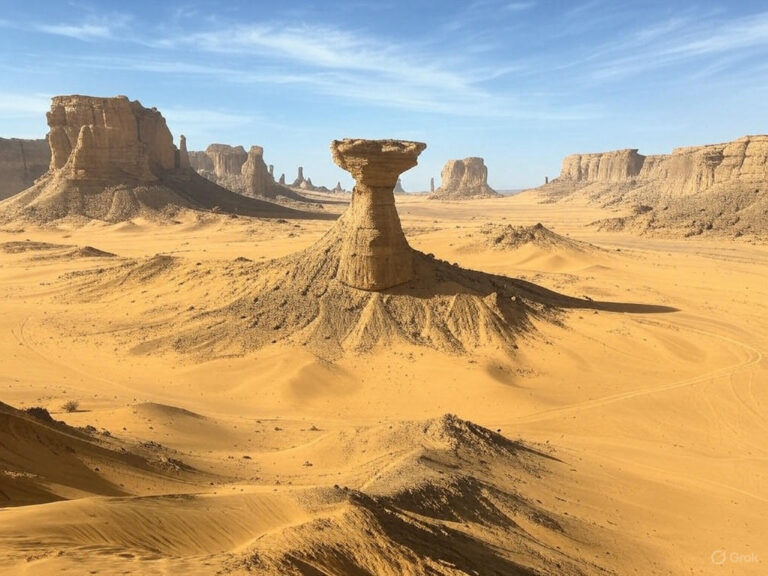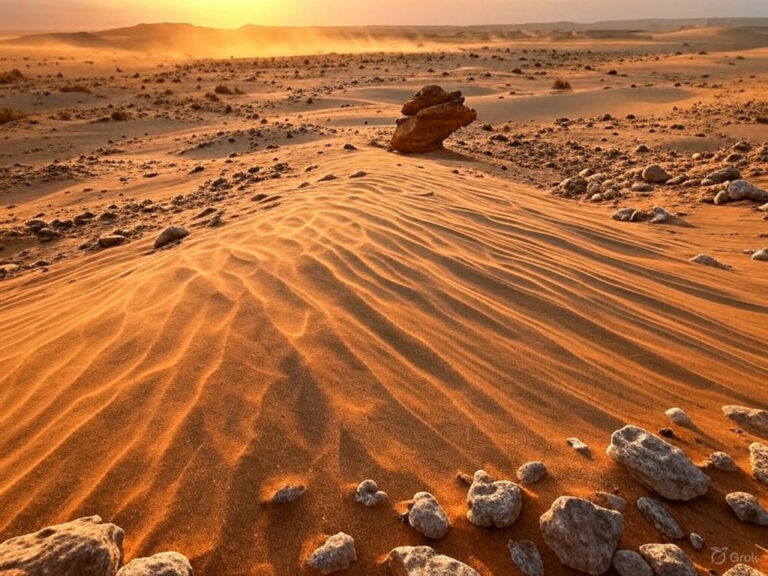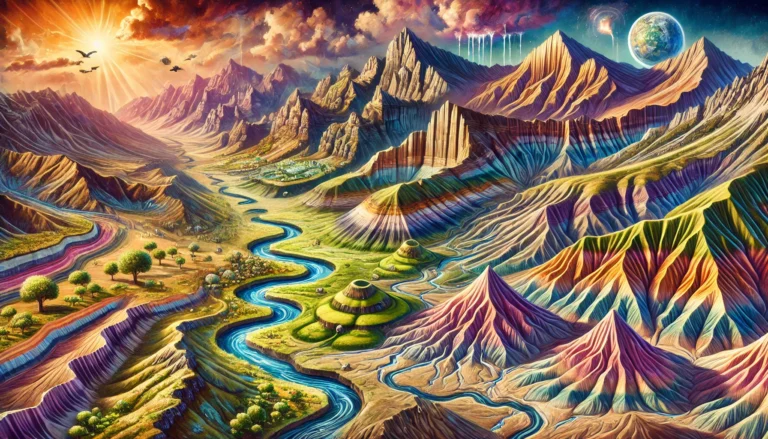Planets of our Solar System
At its simplest:
“A planet is a celestial body that moves in an elliptical orbit around a star.”
In our solar system, the Sun is that central star, and the eight planets orbit it in well-defined paths. But all planets are not the same — they can be grouped into two broad families.
🪐 Classification of Planets
1. Inner Planets / Terrestrial Planets
- Mercury, Venus, Earth, Mars
- Located between the Sun and the Asteroid Belt
- Made of rock and metals → dense, compact
- Called terrestrial = “Earth-like” (terrestrial = terra = earth)
Watch 🎥: Animation of the Inner planets orbiting around the sun
2. Outer Planets / Jovian Planets / Gas Giants
- Jupiter, Saturn, Uranus, Neptune
- Located beyond the asteroid belt
- Made mostly of hydrogen and helium
- Large size, low density, thick atmospheres
- Jovian = “Jupiter-like”
Watch 🎥: Animation of the Outer planets orbiting around the sun
🔁 Orbital Motion and Spin
- All eight planets revolve counter-clockwise around the Sun (as seen from above the Sun’s north pole).
- 6 out of 8 planets also rotate counter-clockwise on their axis.
- But Venus and Uranus are exceptions:
- Venus: rotates clockwise — retrograde rotation
- Uranus: rotates almost on its side (extreme axial tilt), also retrograde
🧠 Such exceptions are useful for tricky UPSC MCQs!
🧮 Astronomical Unit (AU)
- The average distance between Earth and the Sun
- 1 AU = ~150 million km
- Used as a cosmic scale to compare distances in the solar system
Inner Planets — The Rocky Siblings
These four planets have:
- Crust and mantle made of silicates
- Core made of iron and nickel
- Most have impact craters, tectonic features, and volcanism
- Venus, Earth, and Mars have substantial atmospheres
- Do not confuse inner planets with inferior planets
→ Inferior planets = closer to the Sun than Earth (i.e., Mercury & Venus)
☿ Mercury — The Scorched Mini World
- Surface is full of craters, like our Moon → no atmosphere = no erosion
- Geologically inactive for billions of years
- Extreme temperature variation:
- −173 °C at night to 427 °C in day
- Seen only near horizon in the early morning or evening
- Smaller than Ganymede (Jupiter’s moon) and Titan (Saturn’s moon)
→ But more massive than both due to higher density - MESSENGER mission (2004):
- Discovered evidence of pyroclastic flows (explosive volcanism)
- Found water ice at poles
♀ Venus — The Fiery Twin of Earth
- Brightest planet visible from Earth
→ Called Morning Star / Evening Star in ancient texts - Why so bright?
→ High albedo due to sulfuric acid clouds (high reflectivity) - Sometimes even visible in daylight to the naked eye!
Earth’s Twin — But How Much?
Similarities:
- Similar size, mass, density, and composition
- Physical features: high plateaus, mountain belts, volcanoes
Differences:
- Atmosphere: 96% CO₂ with sulfuric acid clouds
- Thickest atmosphere among terrestrial planets
- Surface pressure: 92 times Earth’s → like being 900m underwater on Earth
- Hottest planet in the solar system
→ Not Mercury! Because greenhouse effect traps heat - One day = 243 Earth days, longer than its year (224 Earth days)
- Rotates in reverse (retrograde — clockwise)
🔴 Mars — The Red Hope
“Mars is often seen as humanity’s next home, but it’s also a planet that lost its heart.”
🔹 Why “Red”?
- Mars’s surface is rich in iron oxide (rust) → gives it the reddish hue
🔹 Atmosphere & Magnetosphere:
- 96% CO₂, with traces of methane, water vapor
- Lost its magnetosphere 4 billion years ago
→ Solar wind stripped away the atmosphere → caused cooling
Methane mystery:
Despite being short-lived, methane exists on Mars.
This suggests there must be ongoing sources → either geological (e.g., volcanic) or biological (e.g., microbes)
🔹 Earth-like Seasons:
- Axial tilt = 25.19° → similar to Earth → has seasons
- Day = 1.03 Earth days, but year = ~687 Earth days
- Gravity = 38% of Earth → walking would feel like bouncing!
🌊 What Happened to Mars’s Water?
Once had liquid water, now:
- Atmosphere too thin → water can’t remain liquid
- Water is locked in polar ice caps
🏔️ Surface Features:
- Olympus Mons: Tallest volcano (24 km) in Solar System
- Valles Marineris: One of the largest canyons in the Solar System
- Geologically dead → no tectonic recycling of materials
🔹 Moons:
- Phobos and Deimos: Probably captured asteroids
🌐 Mars vs Earth — Quick Comparison
| Parameter | Mars |
| Diameter | 53% of Earth’s |
| Mass | 10% of Earth’s |
| Surface Gravity | 38% |
| Day Length | 1.03 Earth days |
| Axial Tilt | 25.19° |
| Atmosphere | 95% CO₂ (very thin) |
| Life? | No evidence yet, but conditions were once favorable |
🪐 The Outer Planets — The Titans Beyond the Belt
These are the gas and ice giants, formed far from the Sun where it was cool enough for gases to condense.
🔹 Why Are They Gaseous?
- Close to the Sun → too hot → gases couldn’t condense
- Solar winds blew off gases from inner planets
- Outer planets, being farther, retained their gases
🌟 Jupiter — The Giant
- Largest planet, composed of hydrogen and helium
- No solid surface → just swirling gases
- Fastest rotation (10 hours) → bulges at equator (oblate spheroid)
- Home to the Great Red Spot (storm) and Galilean moons:
- Ganymede (largest moon in Solar System, even larger than Mercury)
- Io, Europa, Callisto
- Visited by NASA’s Juno mission
💍 Saturn — The Ringed Beauty
- Least dense planet (less than water)
- Iconic rings made of ice and rock
- Titan: 2nd largest moon, has a thick atmosphere (mainly nitrogen)
🔄 Uranus — The Tilted Planet
- Rotates on its side (axial tilt ~98°)
- Unusual orientation → extreme seasons
🔵 Neptune — The Windy Twin
- Often paired with Uranus as ice giants
- Strongest winds in Solar System (~2100 km/h)
- Thick atmosphere with ices (water, methane, ammonia)
🎯 Final Insights
| Category | Inner Planets | Outer Planets |
| Distance from Sun | Closer | Farther |
| Composition | Rocky | Gaseous/Icy |
| Atmosphere | Thin/Moderate | Thick (H₂, He) |
| Moons | Few or none | Many |
| Rings | None | All have rings (Saturn’s most visible) |
| Density | High | Low |
| Surface | Solid | No solid surface (except moons) |
🌕 The Moon — Earth’s Loyal Companion
The Moon is more than just a glowing object in the night sky — it’s Earth’s gravitational partner, orbital stabiliser, and a future candidate for human colonisation.
🔹 Physical & Orbital Facts:
- Distance from Earth: ~3,84,400 km
- Diameter: ¼ of Earth’s diameter
- Tidally locked → Rotational period = Orbital period (~27 days)
→ That’s why we always see only one side of the Moon from Earth.
🔹 Cosmic Significance:
- The Moon stabilises Earth’s axial tilt (currently 23.5°).
- Without it, the tilt could swing wildly up to 85°, destabilising Earth’s climate over time.
🌑 Formation — The Giant Impact Hypothesis
Also called the “Big Splat”, it suggests:
A Mars-sized body collided with early Earth → debris was ejected into orbit → coalesced to form the Moon (~4.44 billion years ago)
Watch ▶️ this beautiful animation by NASA showing the formation of Moon.
Interesting point:
- At that time, a day on Earth was just 6 hours!
- Moon was much closer than today → it’s now drifting away by 4 cm per year
🌊 Effects on Earth:
- Moon’s gravity causes tides in oceans
- Tidal friction → slows Earth’s rotation slightly
- In return, the Moon slowly moves away
🧪 Lunar Exploration:
- 1959: Soviet Luna 2 → first artificial impact on Moon
- 1968: Apollo 8 → first human orbit
- 1969: Neil Armstrong & Buzz Aldrin → first humans on Moon (Apollo 11)
India’s Milestone:
- Chandrayaan-1 (2009) discovered water at lunar poles
→ Lunar soil has 0.1% water by weight
🏠 Colonising the Moon — Dream vs Reality
✅ Pros:
- Could serve as a launch base for deeper space missions
- Lunar poles receive continuous sunlight → useful for solar energy
❌ Challenges:
- Long lunar nights (350+ hrs) → solar energy is unreliable
- Lacks carbon, nitrogen, hydrogen — essentials for life
- No atmosphere → extreme temperatures, solar radiation, meteor risks
- Growing food is difficult → poor soil, no pollinators, temperature swings






One Comment